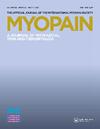Work Disability Related to Musculoskeletal Pain: A System Dynamics Approach
引用次数: 2
Abstract
Abstract Objective: To apply system dynamics methodology to study the evolution of temporary work disability in the context of pain-related musculoskeletal disorders [MSD-TWD]. Methods: Data were obtained from the MSD-TWD program records on 13 077 patients with acute disability [7805 in the control group [CG]; 5272 in the intervention group [IG]] who suffered 16 297 episodes of temporary work disability. Samples were randomized into two homogeneous sub-samples for validation purposes. The dynamic model developed with system dynamics methodology included 20 variables [five levels, seven rates, two auxiliary variables, six parameters], five differential equations, and eight algebraic equations. A sensitivity analysis of various scenarios was carried out. Results: Episodes were described according to their duration; short-term and long-term MSD-TWD. By tuning the model parameters, the actual survival curves of both groups in the two sub-samples were almost exactly reproduced. An explicit temporal expression of the survival curve was used in solving the equations of the dynamic model. The mean duration of short-term episodes was 18 days [d] in the CG and 14 d in the IG, while the mean duration of long-term episodes was 98 and 57 d, respectively. The conversion rate from short-term to long-term work disability was 7.3% in the CG compared with 3.5% in the IG. The model was cross-validated. Sensitivity analysis showed no overlap between the CG and IC curves. Conclusion: The dynamic model proposed is an excellent approach to the generic temporary work disability process, and is also able to explain the effects of intervention on the process.与肌肉骨骼疼痛相关的工作残疾:系统动力学方法
摘要目的:应用系统动力学方法研究疼痛相关肌肉骨骼疾病[MSD-TWD]背景下临时工作残疾的演变。方法:数据来源于MSD-TWD程序记录的13 077例急性残疾患者[对照组7805例];干预组[IG]中有5272人,他们有16297次暂时工作残疾。为了验证目的,样本被随机分为两个均匀的子样本。采用系统动力学方法建立的动力学模型包括20个变量[5个水平、7个速率、2个辅助变量、6个参数]、5个微分方程和8个代数方程。对各种情况进行了敏感性分析。结果:根据发作的持续时间进行描述;短期和长期的MSD-TWD。通过调整模型参数,两个子样本中两组的实际生存曲线几乎完全重现。在求解动力学模型方程时,采用了生存曲线的显式时间表达式。短期发作平均持续时间CG组为18 d, IG组为14 d,长期发作平均持续时间分别为98 d和57 d。从短期到长期工作残疾的转换率在CG中为7.3%,而在IG中为3.5%。对模型进行交叉验证。敏感性分析显示CG和IC曲线无重叠。结论:提出的动态模型是一种很好的方法来研究一般临时性工作失能过程,也能解释干预对过程的影响。
本文章由计算机程序翻译,如有差异,请以英文原文为准。
求助全文
约1分钟内获得全文
求助全文

 求助内容:
求助内容: 应助结果提醒方式:
应助结果提醒方式:


